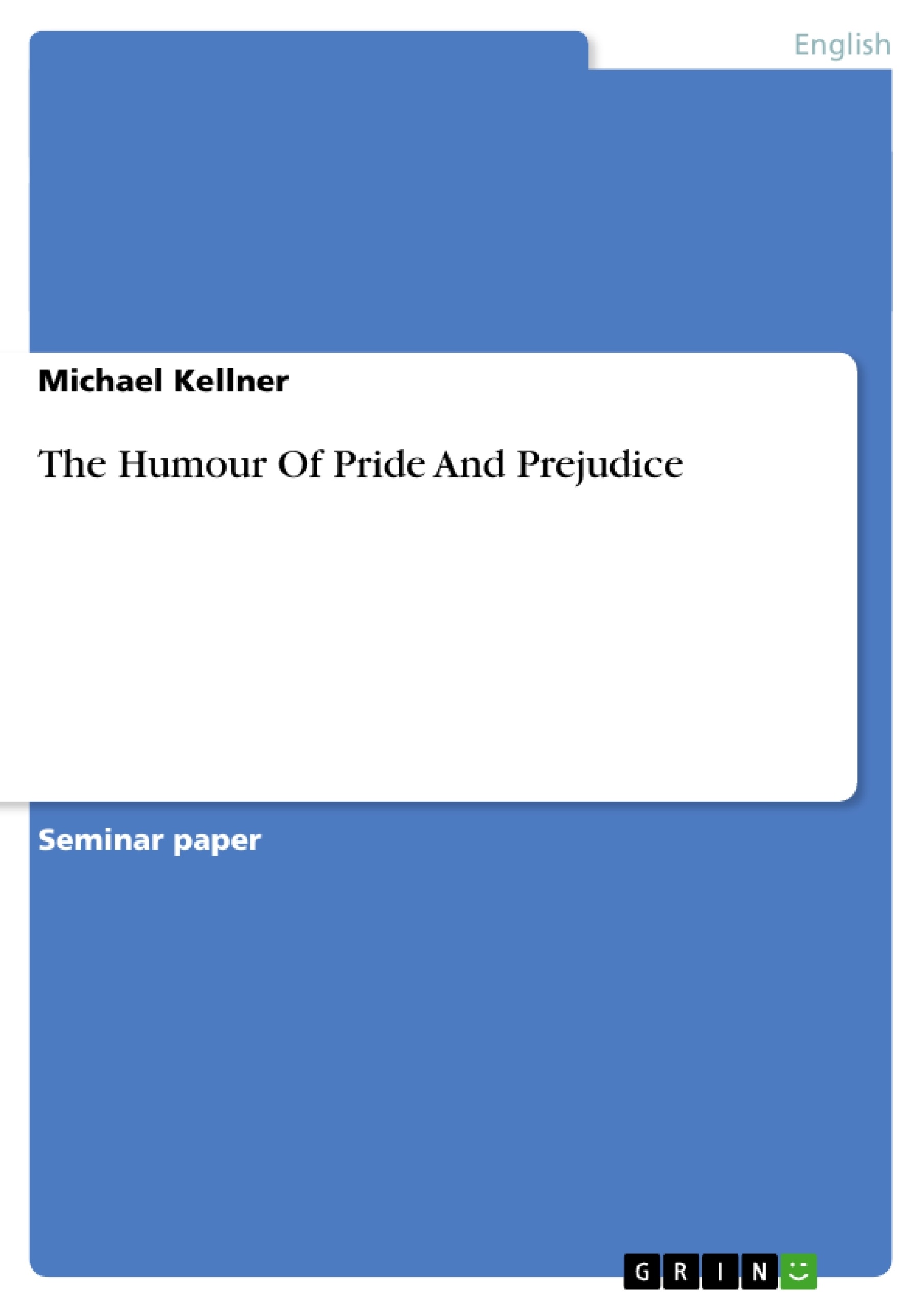„Humour is the quality of being amusing or comic: (…) the ability to appreciate things, situations or people that are comic; the ability to be amused: (…)” (Oxford Advanced Learner’s Dictionary 1995). In Latin the word “humour” stands for moisture. In the ancient world it was meant as the right and healthy condition of body fluids. But nowadays it is a well known element of Art, especially of literature. The need of people to get entertained in a humoristic way is placed in nearly all epochs of mankind. Humour can be distinguished between “clean” variants and “dark” humoristic styles like satire, irony, parody or even sarcasm. A well known example is the so called black humour. Individual views or interpretations of humour depend on different nations, social classes, or mentality. For example England is famous for the English Humour, which can be compared with the “dark” sides of humour (Encarta Enzyklopädie 2003). Jane Austen is a representative for the English humoristic style.
Inhaltsverzeichnis (Table of Contents)
- Jane Austen's humour
- Definition
- Comments and criticism
- The humour of Pride and Prejudice
- Humoristic techniques and styles
- Characters and exaggeration
- Irony
- Satire
- Contrary Characters
- Conclusion
- Literature
Zielsetzung und Themenschwerpunkte (Objectives and Key Themes)
This text aims to explore the humour present in Jane Austen's novel, Pride and Prejudice. The analysis delves into the definition of humour, examines Jane Austen's use of humoristic techniques and styles, and investigates the various elements that contribute to the comedic nature of the novel.
- Jane Austen's unique style of humour
- The use of satire and irony in Pride and Prejudice
- The role of character exaggeration in creating humour
- The comedic portrayal of social manners and conventions
- The presence of erotic themes beneath the humoristic surface
Zusammenfassung der Kapitel (Chapter Summaries)
The first chapter focuses on defining humour and explores Jane Austen's distinctive approach to this element in her writing. It examines critical commentary on her work, highlighting the recognition of her social comedy and the evolution of her style within the context of 18th-century literary trends. The chapter also touches upon the influence of her surroundings and her talent for capturing human foibles.
The second chapter delves into the specific humoristic techniques and styles employed in Pride and Prejudice. It explores how Jane Austen utilizes irony, satire, character exaggeration, and comical conversations to create a humorous narrative. The chapter also discusses how she incorporates the reader into her ironic storytelling, allowing them to laugh at themselves and their own perspectives.
Schlüsselwörter (Keywords)
This text focuses on Jane Austen, Pride and Prejudice, humour, satire, irony, social comedy, character exaggeration, comedic techniques, English humour, and erotic themes.
- Quote paper
- Michael Kellner (Author), 2005, The Humour Of Pride And Prejudice, Munich, GRIN Verlag, https://www.grin.com/document/35389




